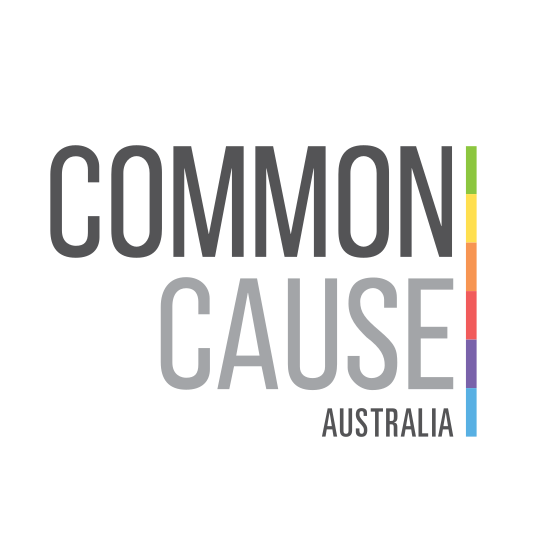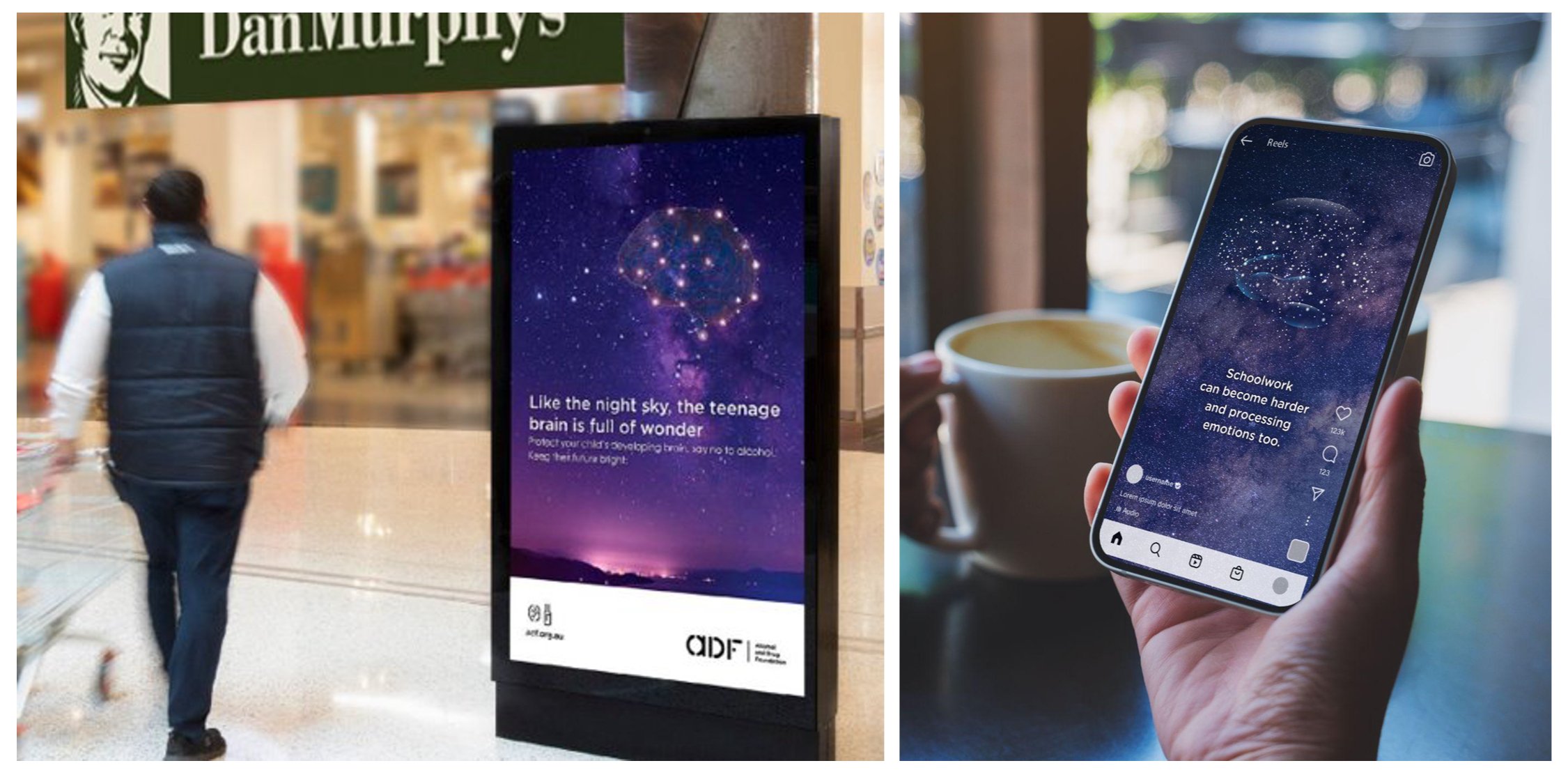Case Study: How to talk to parents about underage alcohol supply
At Common Cause, we pride ourselves on helping organisations create impactful, values-driven campaigns. One of our recent collaborations with the Alcohol and Drug Foundation (ADF) provides a great example of what this looks like in practice.
The campaign, Keep Their Future Bright, tackled the sensitive yet critical issue of parents supplying alcohol to underage children, with the goal of reducing underage drinking. Here’s how we approached this challenging communications problem, achieved success, and what lessons we can share with others in health promotion.
The Challenge
Why focus on parental supply of alcohol?
The statistics paint a sobering picture: one in three young people start drinking before the age of 13, and 43% of young drinkers obtain alcohol from their parents. Despite existing research and guidelines warning against underage drinking, many parents believe providing alcohol to their children teaches them to drink ‘safely’.
Previous campaigns showed limited success in reaching parents on this issue. ADF knew that to create meaningful change in parental supply, would require a dedicated campaign based on firm research. That’s when they reached out to Common Cause.
The Research Approach
To inform the new campaign, our comprehensive research included:
1. Advocate Interviews
We spoke with 15 advocates deeply passionate about alcohol harm reduction. This allowed us to understand their motivations and the communication gaps between experts and the public.
2. Public Discourse Analysis
Analysing over 2,000 language samples, we identified dominant public narratives about underage drinking and the different ways that parents reasoned about the risks of underage drinking and how these should be addressed.
3. Focus Groups
Eight focus groups with parents revealed strong emotional resistance to facts-based messaging. Many parents rejected scientific evidence outright, favouring personal anecdotes and entrenched beliefs.
4. Quantitative Testing
Online message testing with 1,700 parents nationwide helped us identify what resonated with persuadable parents and differentiated them from staunch supporters and opposition. This testing also included dial testing that gave us a word-by-word analysis of what messaging cuts through with parents - and what falls flat.
Key Insights
The research revealed three pivotal insights that shaped the direction of the campaign. These insights not only informed the messaging but also highlighted critical challenges and opportunities in addressing parental attitudes toward underage drinking.
1. Facts don’t persuade
One of the most striking findings was the ineffectiveness of relying on facts and evidence to shift parental attitudes. While the data is clear—underage drinking harms brain development, increases the risk of addiction, and leads to long-term mental health issues—simply presenting these facts had the opposite effect on many parents.
In focus groups, parents frequently dismissed or resisted factual information that contradicted their personal beliefs or experiences. For instance, when presented with research showing that parental supply of alcohol increases the likelihood of risky drinking behaviours later in life, many parents rejected the claim outright. Instead, they clung to the narrative that early supervised exposure to alcohol teaches moderation and prevents binge drinking.
This resistance often stemmed from deeply held personal stories or anecdotal evidence, such as, “My parents let me drink at family events, and I turned out fine.” For these parents, facts not only failed to persuade but also provoked defensive or hostile reactions, reinforcing their existing beliefs.
The insight here was clear: facts alone don’t inspire behavioural change, especially when they contradict entrenched cultural narratives. Instead, messaging needed to align with parents’ values and offer them alternative solutions that felt practical and achievable.
2. Values-Based Messaging works
To overcome the limitations of facts-based messaging, we focused on values-based storytelling—an approach that connects emotionally with audiences by tapping into their deeply held values and motivations. In this case, three core values resonated most with parents:
Universalism: Parents were moved by appeals to social justice and fairness, particularly when messaging highlighted how the alcohol industry uses manipulative tactics to target young people. Statements like, “The alcohol industry uses sneaky social media marketing to make teenagers feel drinking is necessary to fit in,” resonated strongly. This framed the issue as a larger societal problem, not just a personal one, which helped parents see themselves as allies in protecting their children.
Benevolence: Emphasising the love and care parents feel for their children was another powerful motivator. Messaging that highlighted their role in supporting their child’s health and future success—such as, “We all want our kids to have the best chance in life”—connected emotionally and encouraged parents to reconsider their behaviours.
Self-Direction: Framing parenting as a journey of learning and growth resonated deeply, particularly for parents who were already grappling with how best to navigate difficult topics like alcohol. Statements like, “As parents, we’re always learning and evolving, especially as new information emerges,” opened parents up to reconsider their approach without feeling judged.
Values-based messaging created a sense of empowerment and collaboration rather than judgment, helping parents feel they were making informed, positive choices for their children rather than being criticised for their current behaviours.
3. focus on solutions - not fear
Many traditional health campaigns rely on fear to motivate change, but in this context, fear-based messaging proved counterproductive. Parents were already worried about the risks associated with alcohol consumption. Amplifying that fear without providing actionable solutions only heightened their anxiety, which often led to avoidance or outright rejection of the message.
For example, stating facts like, “Research shows early drinking increases the risk of addiction and mental health issues,” only reinforced feelings of helplessness for some parents. Without a clear alternative to supplying alcohol, parents often defaulted to the narrative they were most familiar with: that supervised alcohol consumption at home could mitigate risks.
Instead of amplifying fear, we shifted the focus to positive, solution-oriented messaging. This included emphasising the long-term benefits of keeping children alcohol-free, such as better academic performance, improved emotional health, and a greater ability to achieve their potential. For example:
Problem-focused message: “Alcohol damages teenage brains and leads to poor outcomes.”
Solution-focused message: “Teenagers today are proving they don’t need alcohol to have fun or succeed. Let’s help them grow up healthy and happy by keeping them alcohol-free.”
This shift from fear to empowerment helped parents feel equipped to address the issue constructively, reducing defensiveness and encouraging engagement with the message.
Together, these insights underscored the importance of acknowledging parents’ fears, connecting with their values, and providing actionable solutions rather than relying on information or fear alone. By applying these principles, the campaign successfully bridged the gap between parental attitudes and the evidence-based recommendations needed to keep their children safe.
Crafting the Campaign
With these insights, the ADF and Common Cause developed a campaign centred around healthy brain development—a universally compelling issue for parents. The creative agency ADF partnered with took this message further by using the universe as a metaphor for the teenage brain, framing it as something wondrous that needs protection.
The campaign’s tagline, “Keep Their Future Bright,” encapsulated the vision of helping teens reach their full potential, free from the harms of alcohol.
The fully integrated campaign targeted parents in rural NSW using:
Digital Media: Social media ads on Facebook and Instagram, YouTube videos, and Google search ads.
Out-of-Home Advertising: Eye-catching visuals placed in high-traffic areas like shopping malls.
Community Outreach: Stakeholder kits with printed materials and promotional items, including stress balls shaped like brains, facilitated local engagement.
Media Outreach: Real-life stories from parents served as case studies to personalise the campaign.
The Results
The campaign was externally evaluated, and the results were excellent:
50% of persuadable parents reconsidered supplying alcohol.
8% more parents understood the harms of underage drinking on brain development.
11% fewer parents intended to supply alcohol to their children in the future.
20% increase in parents believing children should never drink underage.
These outcomes highlight the power of values-based messaging (over fact-based messaging) and the importance of practical, solution-focused resources (instead of problem-focussed shaming).
Lessons for Health Promotion
Invest in research upfront: Deep audience insights helped us avoid missteps and confidently develop effective messaging.
Leverage values, not facts: Emotional connection drives behaviour change more effectively than data alone.
Offer practical solutions: Parents need tangible tools, such as guides on starting conversations about alcohol.
Next Steps
The success of “Keep Their Future Bright” has inspired ADF to roll out the campaign in Canberra, adapting it to priority populations, including First Nations communities. This process will involve co-design and consultation to ensure cultural relevance and effectiveness.
We hope this case study serves as a blueprint for others tackling complex health promotion challenges. By aligning messaging with deeply held values and providing actionable solutions, we can inspire meaningful change.
For more details, check out the Parental Supply of Alcohol Message Guide on the Common Cause website.

